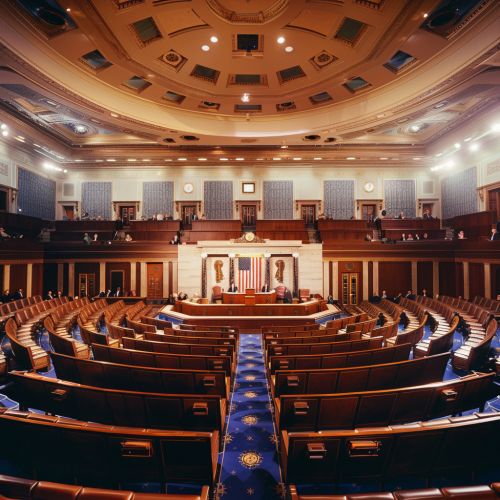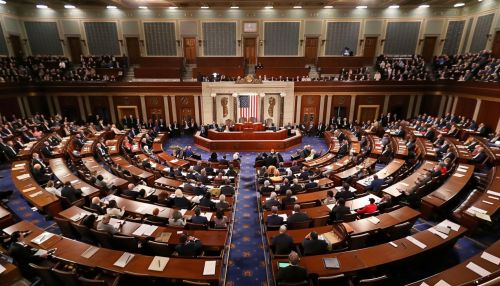Minority Leader of the United States House of Representatives
Role and Responsibilities of the Minority Leader
The Minority Leader of the United States House of Representatives is a key figure in the legislative process, serving as the leader of the party with the second-highest number of seats in the House. The Minority Leader's primary responsibilities include coordinating and strategizing the legislative agenda of the minority party, acting as the chief spokesperson for the party, and working to protect the interests of the minority party members. The Minority Leader also plays a crucial role in negotiations with the Majority Leader and other key figures to influence legislation and policy decisions.
Historical Context
The position of Minority Leader has evolved significantly since its inception. Initially, the role was informal and lacked the structured responsibilities it holds today. Over time, as the political landscape of the United States became more complex, the need for a formal leader to represent the minority party in the House became apparent. The position was officially recognized in the early 20th century, and since then, it has grown in importance and influence.
Election and Tenure
The Minority Leader is elected by the members of the minority party in the House of Representatives. The election typically takes place at the beginning of each new Congress, following the general elections. The tenure of the Minority Leader is not fixed and can vary depending on the political dynamics within the party and the House. The Minority Leader serves at the pleasure of the party members and can be replaced if the party deems it necessary.
Legislative Strategy and Tactics
The Minority Leader employs various strategies and tactics to advance the minority party's legislative agenda. This includes negotiating with the Majority Leader and other key figures, mobilizing party members to vote in a unified manner, and using procedural tools to influence the legislative process. The Minority Leader also works closely with committee chairs and ranking members to shape policy and legislation.
Influence and Power Dynamics
The influence of the Minority Leader can vary depending on the political context and the composition of the House. In situations where the majority party holds a slim margin, the Minority Leader can wield significant power by leveraging the minority party's votes to influence legislation. Conversely, in situations where the majority party holds a substantial margin, the Minority Leader's influence may be more limited. However, the Minority Leader always plays a critical role in representing the minority party's interests and ensuring that their voices are heard in the legislative process.


Notable Minority Leaders
Throughout history, several individuals have served as Minority Leader and have left a lasting impact on the legislative process and the political landscape of the United States. Some notable Minority Leaders include:
- Robert H. Michel, who served as Minority Leader from 1981 to 1995 and was known for his bipartisan approach and ability to work across the aisle.
- Nancy Pelosi, who served as Minority Leader from 2003 to 2007 and again from 2011 to 2019, before becoming the first female Speaker of the House.
- John Boehner, who served as Minority Leader from 2007 to 2011 before becoming Speaker of the House.
Challenges and Criticisms
The role of Minority Leader comes with its own set of challenges and criticisms. One of the primary challenges is maintaining party unity and ensuring that all members of the minority party are aligned with the party's legislative agenda. This can be particularly difficult in a diverse party with varying ideologies and priorities. Additionally, the Minority Leader often faces criticism from both within and outside the party, especially when the party fails to achieve its legislative goals or when there is a perception of ineffective leadership.
Relationship with the Majority Leader
The relationship between the Minority Leader and the Majority Leader is a crucial aspect of the legislative process. While the two leaders often have opposing political views and agendas, they must work together to ensure the smooth functioning of the House. This relationship can be cooperative or contentious, depending on the political climate and the specific issues at hand. Effective communication and negotiation skills are essential for the Minority Leader to navigate this relationship and achieve the party's objectives.
Impact on Policy and Legislation
The Minority Leader has a significant impact on policy and legislation, even when the minority party does not control the House. By mobilizing party members, negotiating with the majority party, and using procedural tools, the Minority Leader can shape the legislative agenda and influence the outcome of key policy decisions. The Minority Leader also plays a critical role in holding the majority party accountable and ensuring that the minority party's perspectives are considered in the legislative process.
Conclusion
The Minority Leader of the United States House of Representatives is a vital figure in the legislative process, representing the interests of the minority party and working to influence policy and legislation. The role requires strong leadership, strategic thinking, and effective negotiation skills. Despite the challenges and criticisms, the Minority Leader plays a crucial role in shaping the political landscape and ensuring that the voices of the minority party are heard.
